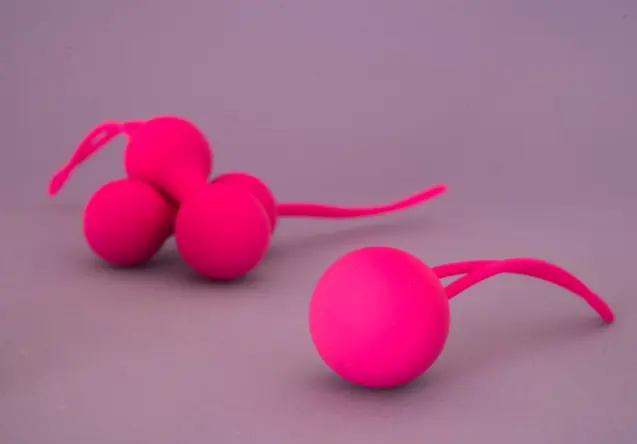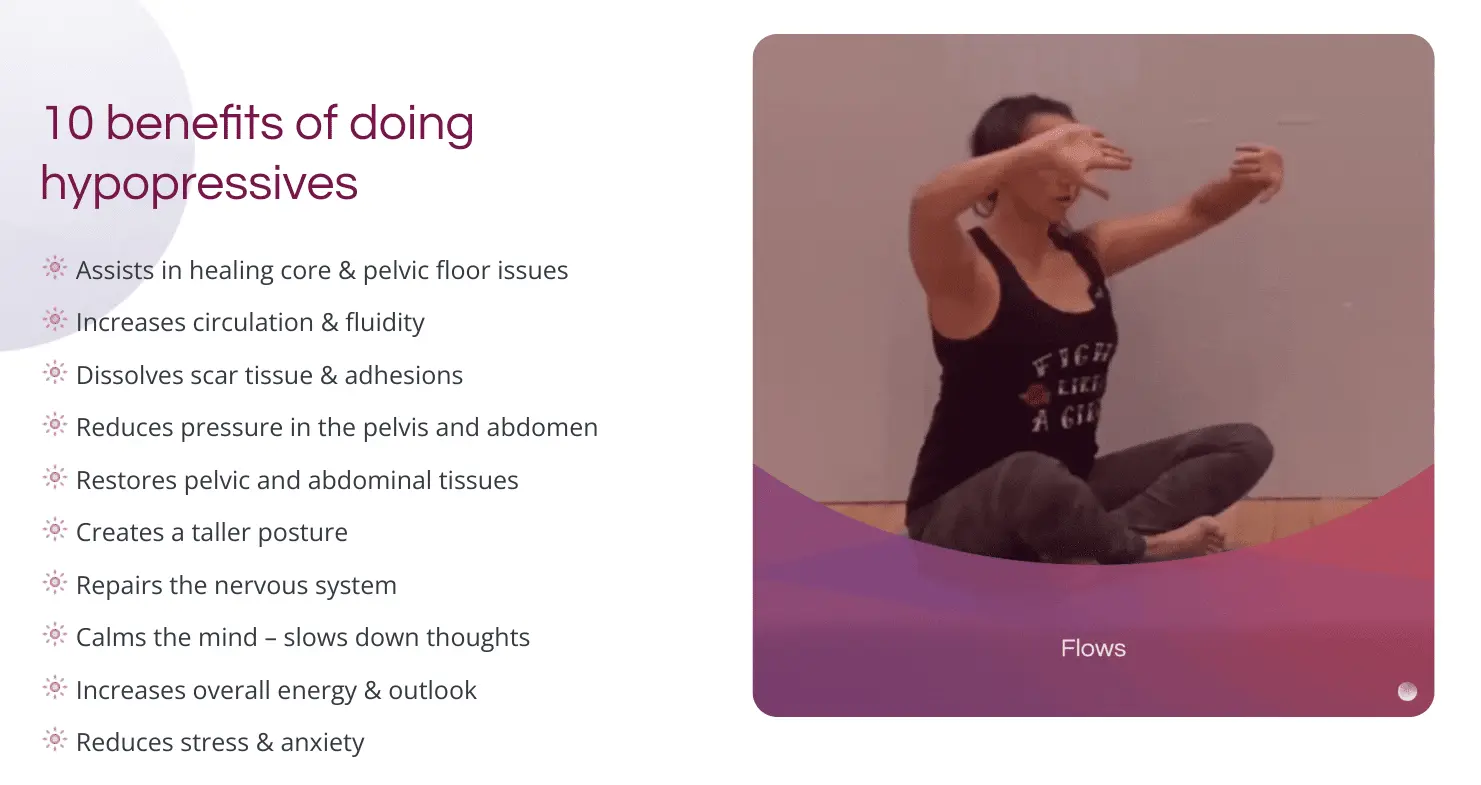Do Kegels Work For Incontinence Or Prolapse?
- June 9, 2022
- Pelvic Floor

“Just do your Kegels”, is something that women often hear after asking their doctor the tough and embarrassing question of how they can heal prolapse and incontinence. Kegels have become the go-to suggestion for fixing pretty much any issue associated with the pelvic floor.
Estimates indicate 40-60% of women experience incontinence after they give birth.
Sadly, however, many women realize that Kegels don’t work for them. They aren’t as effective as claimed and can even be harmful.
Yet, the search for a more effective solution will often lead to the same place…
Just do your Kegels.
So, what should you do then?
Well, for starters, not Kegels.
Kegels can be helpful in certain cases, especially if combined with other holistic healing approaches. Nonetheless, there are, indeed, more effective ways that can help you heal prolapse and incontinence naturally, and you’ve come to the right place to learn about them. But, before we get into them, let’s first take a look at why Kegels don’t work.
Kegels & Pelvic Floor Dysfunction
Kegels, also called Kegel exercises or pelvic floor exercises, are a form of exercises that aim to strengthen the pelvic floor.
The pelvic floor is a group of muscles and tissues at the bottom of the abdominal-pelvic cavity. It’s a bowl-shaped diaphragm that supports the pelvic organs – the bladder, bowels, and uterus.
The pelvic floor is also a part of the core, a group of muscles that form the abdominal cavity. The abdominal muscles, back muscles, the diaphragm that supports our lungs, and some glute muscles form the core along with the pelvic floor muscles.
As we age, the pelvic floor tends to become weaker. This is especially true for women. Pregnancies, labor, childbirth, and hormonal changes associated with menopause all contribute to the pelvic floor muscles and tissues losing their tone or getting injured.
This can lead to a range of pelvic floor disorders, namely:
• pelvic organ prolapse when pelvic organs are pulled into the vagina
• urinary or fecal incontinence when the pelvic floor is unable to properly contract and relax in order to control urine or bowel movements
• pelvic pain or discomfort, especially during sexual intercourse
Invented and popularized by American gynecologist Arnold Kegel in the late 1940s, Kegels became the number one suggestion for non-surgical treatment of postnatal recovery, prolapse, incontinence, and other pelvic floor issues.
Kegels involve repeatedly contracting and relaxing the pelvic floor muscles.
The exercises consist of sets of short contractions when you contract and immediately release the pelvic floor muscles as well as slow contractions when you hold the pelvic muscles contracted for up to ten seconds.
In recent years, vaginal weights, wands, and apps have become popular to complement a Kegel exercise routine.
Do Kegels Help with Prolapse and Incontinence?
Prolapse and incontinence occur due to weakened or injured pelvic floor muscles. Pregnancy, labor, and childbirth are some of the primary causes of these pelvic floor disorders. However, they can also occur due to injury, menopause, and other reasons.
If a muscle is weak, the common answer is to strengthen it. Kegels aim to strengthen the pelvic floor muscles. Therefore, doctors tend to prescribe a Kegels exercise routine for a prolapsed uterus, bladder, or bowels, as well as incontinence.
But do Kegels help with prolapse and incontinence and deliver the expected results?
In most cases, they don’t, especially if used as the only treatment method. Kegel’s exercise routine either does not heal a prolapsed uterus or incontinence or can even make the condition worse. It can tighten and lift the pelvic floor while pushing the prolapsed organs further out in the direction of prolapse.
So, if you suffer from prolapse or incontinence, the most beneficial approach for you would be to stop or skip Kegels.
Can Kegels Prevent Prolapse and Incontinence?
Sadly, the answer to this question is not a straightforward one. It really depends on a case-by-case scenario.
In theory, it’s true. Kegels can possibly prevent prolapse and incontinence. Since the risk of both prolapse and incontinence increases as our pelvic muscles weaken, Kegels could indeed provide the strengthening routine necessary to prevent this from happening.
But Kegels Can Also Make Things Worse
Kegels, also called Kegel exercises or pelvic floor exercises, are a form of exercises that aim to strengthen the pelvic floor.
The pelvic floor is a group of muscles and tissues at the bottom of the abdominal-pelvic cavity. It’s a bowl-shaped diaphragm that supports the pelvic organs – the bladder, bowels, and uterus.
The pelvic floor is also a part of the core, a group of muscles that form the abdominal cavity. The abdominal muscles, back muscles, the diaphragm that supports our lungs, and some glute muscles form the core along with the pelvic floor muscles.
As we age, the pelvic floor tends to become weaker. This is especially true for women. Pregnancies, labor, childbirth, and hormonal changes associated with menopause all contribute to the pelvic floor muscles and tissues losing their tone or getting injured.
This can lead to a range of pelvic floor disorders, namely:
• pelvic organ prolapse when pelvic organs are pulled into the vagina
• urinary or fecal incontinence when the pelvic floor is unable to properly contract and relax in order to control urine or bowel movements
• pelvic pain or discomfort, especially during sexual intercourse
Invented and popularized by American gynecologist Arnold Kegel in the late 1940s, Kegels became the number one suggestion for non-surgical treatment of postnatal recovery, prolapse, incontinence, and other pelvic floor issues.
Kegels involve repeatedly contracting and relaxing the pelvic floor muscles.
The exercises consist of sets of short contractions when you contract and immediately release the pelvic floor muscles as well as slow contractions when you hold the pelvic muscles contracted for up to ten seconds.
In recent years, vaginal weights, wands, and apps have become popular to complement a Kegel exercise routine.
Do Kegels Help with Prolapse and Incontinence?
Prolapse and incontinence occur due to weakened or injured pelvic floor muscles. Pregnancy, labor, and childbirth are some of the primary causes of these pelvic floor disorders. However, they can also occur due to injury, menopause, and other reasons.
If a muscle is weak, the common answer is to strengthen it. Kegels aim to strengthen the pelvic floor muscles. Therefore, doctors tend to prescribe a Kegels exercise routine for a prolapsed uterus, bladder, or bowels, as well as incontinence.
But do Kegels help with prolapse and incontinence and deliver the expected results?
In most cases, they don’t, especially if used as the only treatment method. Kegel’s exercise routine either does not heal a prolapsed uterus or incontinence or can even make the condition worse. It can tighten and lift the pelvic floor while pushing the prolapsed organs further out in the direction of prolapse.
So, if you suffer from prolapse or incontinence, the most beneficial approach for you would be to stop or skip Kegels.
Can Kegels Prevent Prolapse and Incontinence?
Sadly, the answer to this question is not a straightforward one. It really depends on a case-by-case scenario.
In theory, it’s true. Kegels can possibly prevent prolapse and incontinence. Since the risk of both prolapse and incontinence increases as our pelvic muscles weaken, Kegels could indeed provide the strengthening routine necessary to prevent this from happening.
A tense pelvic floor can also be more susceptible to damage and injury during pregnancy, labor, and childbirth because it’s fatigued and unable to properly relax. It’s not uncommon for women with a tight pelvic floor to have a long and difficult labor.
Problems can also occur if your pelvic floor is imbalanced. In this case, you may not be able to isolate and engage all your pelvic muscles at the same rate. This can lead to even more imbalance causing a section of your pelvic floor to become stronger or tenser while the rest of it may not experience any improvement at all.
Due to these reasons, each woman should individually assess whether Kegels are beneficial for her. Moreover, Kegels should not be used as an isolated method of treatment. It’s best to undertake a holistic approach to effectively prevent prolapse and incontinence.
Here is a YouTube Video where I talk more in-depth about the inefficacy of Kegels if you are in this situation:
I Don’t Feel Much Difference Doing Kegels. Why’s That?
Kegels could be beneficial in preventing prolapse, incontinence, and other pelvic floor issues, Yet, they aren’t suitable for everyone. There is also a range of mistakes that can lead you to not feeling much or any difference doing Kegels.
Let’s take a look at a few of the most common ones:
1. Kegels Aren’t for You
Kegels aren’t a suitable exercise routine for everyone. Since Kegels focus on strengthening the pelvic floor muscles, they can be harmful to those who already have a tight or imbalanced pelvic floor.
Additionally, they are ineffective for healing pelvic organ prolapse and incontinence. Instead, they can make the condition worse. If you experience prolapse or incontinence, it’s best to stop Kegels immediately.
2. You Are Doing Kegels Incorrectly
In order to obtain benefits from Kegels, you need to engage the right muscles while leaving glutes, thighs, and abdominal muscles relaxed. Isolating pelvic floor muscles can be difficult and can take time. Therefore, many find Kegels challenging and engage other groups of muscles too.
Keep in mind that relaxing glutes, thighs, and abdominals during Kegels doesn’t mean that you shouldn’t be working on these muscles at all. Muscles in the body do not work in isolation. Because of that, the pelvic floor can absolutely benefit from the support of a strong core and glutes.
Besides that, you may be using the wrong form when performing Kegels. If the movement you are performing is similar to that of pushing the fecal matter out, you are doing it wrong. Instead, you should be tensing and lifting the muscles up.
Inconsistency in Kegel exercise practice can also lead to it being ineffective, or even make things worse.
3. You Are Only Doing Kegels
While Kegels can be beneficial in certain cases, doing only Kegels is not enough. Kegels focus on strengthening the pelvic floor when the ability to relax it is equally as if not more important.
Incorrect alignment and posture can worsen pelvic floor dysfunction. Therefore, strengthening other muscles such as the core and glutes can be beneficial. It can lower abdominal pressure and release some of the stress placed on the pelvic floor muscles.
Depending on your specific condition and circumstances, you can also benefit from diet changes, relaxation practice such as through yoga and meditation, exercise routines such as hypopressive exercises that focuses on reducing the pressure in the abdominal cavity and improving pelvic floor and core functionality in a gentle manner, as well as other approaches.
The human body is a complex unit, and the pelvic floor works in synergy with other muscle groups. Due to that, you are likely to experience more benefits and faster results if you approach pelvic floor issues holistically.
4. You Are Not Relaxing Your Pelvic Floor
For the pelvic floor to work optimally and in the way it was designed, it needs to be able to effectively contract and relax. Without the ability to relax, it is unable to provide adequate support for the pelvic organs. It can also limit the supply of blood and oxygen that the pelvic area receives.
If your pelvic floor is unable to properly relax, Kegels can exacerbate the problem. They can make your pelvic muscles tighter and tenser than they already are.
Regular practice of hypopressives, diaphragmatic breathing, and yoga poses that lengthen the pelvic floor are some of the ways in which you can improve your body’s ability to optimally engage and relax the pelvic floor muscles.
5. You Are Overdoing Kegels
The more the better? Not when it comes to Kegels. Excessive Kegel practice can lead to a tight and tense pelvic floor. While it may seem like you have very strong pelvic muscles, without the ability to properly relax, your pelvic floor is actually weak and ineffective.
What Should You Do Instead of Kegels?
If you suffer from pelvic floor dysfunction, Kegels aren’t the best route to take. Contrary to common belief and popular doctors’ advice, Kegel’s exercise routine won’t help with a prolapsed uterus, bladder, and bowels, nor will it effectively heal incontinence.
Instead, you can benefit exponentially more from engaging in a gentle exercise routine such as Hypopressives. Hypopressives is a set of breathing and postural exercises that improve the functionality of the core and pelvic floor muscles in a more integrated and holistic manner than Kegels.
As the name implies, hypopressives focus on reducing the pressure in the abdominal pelvic cavity. This provides immediate relief for someone with prolapse or incontinence. Meanwhile, a regular hypopressive practice can reverse these conditions by helping the body to relearn how to properly engage and relax pelvic and core muscles as well as optimally use them when the body is in a relaxed state.
In addition to improving pelvic floor functionality as well as healing and preventing prolapse and incontinence, hypopressives also have a range of other benefits that Kegels don’t offer. They can reduce back pain, heal diastasis recti, flatten the belly and improve the visual appearance of the midsection, provide relaxation, and improve self-esteem.
Other Alternative Healing Methods that Can Be More Effective than Kegels
Besides hypopressives, there are other methods that can complement your pelvic floor healing journey. These include:
• Scar tissue massage – pelvic floor scar tissue can form from tears during birthing, episiotomies, prolapse, and other pelvic floor issues. It isn’t always as elastic as the original tissue and can lead to pain and tightness in the area. Scar tissue massage can help release blockages in the area.
• Yoni or vaginal steaming – this technique involves sitting or squatting over a steaming pot of water with herbs steeped in it. It increases blood and oxygen flow to the pelvis and provides additional benefits from the herbs.
• Pelvic floor work – this may involve hands-on techniques or tools such as vaginal dilators that can help break up scar tissue, relax and stretch the pelvic floor muscles. It may also involve hands-off techniques that focus on the mind-body connection.
• Change of diet – excess weight can additionally strain the already weakened pelvic floor. Meanwhile, certain foods can make bowel and urine movements harder. So, changes to dietary habits can help manage prolapse and incontinence.
• Belly dancing – it helps improve the elasticity and mobility of the pelvic floor and tones the surrounding muscles.
• Homeopathy – a range of homeopathic medications that focuses on pelvic floor issues and disorders and can help relieve pain and discomfort.
• Block therapy – it focuses on fascia and can help promote blood and oxygen flow to the pelvic area as well as improve alignment.
• Acupuncture – by allowing direct access to the pelvic floor muscles, acupuncture can soothe overactive muscles while gently strengthening the weak ones.
• Reducing stress levels – excessive stress can contribute to a tight pelvic floor. Focusing on lowering stress levels can help ease tension in the pelvic area among many other benefits.
What about Kegels, you ask?
When I first found out that I had a prolapse, the doctors told me to “just do your kegels, and you’ll be fine”.
And so I did… But it just made the symptoms worse, and at first, I had no idea that Kegels were putting additional stress on my pelvic floor.
This is why we’ve created a supportive community of women that truly understand what it’s like to be in your shoes. Our Pelvic Floor Dysfunction Program offers a science-based natural healing solution for you to heal from incontinence or even prevent prolapse and improve the overall health of your pelvic floor.
Blog posts you might like:






